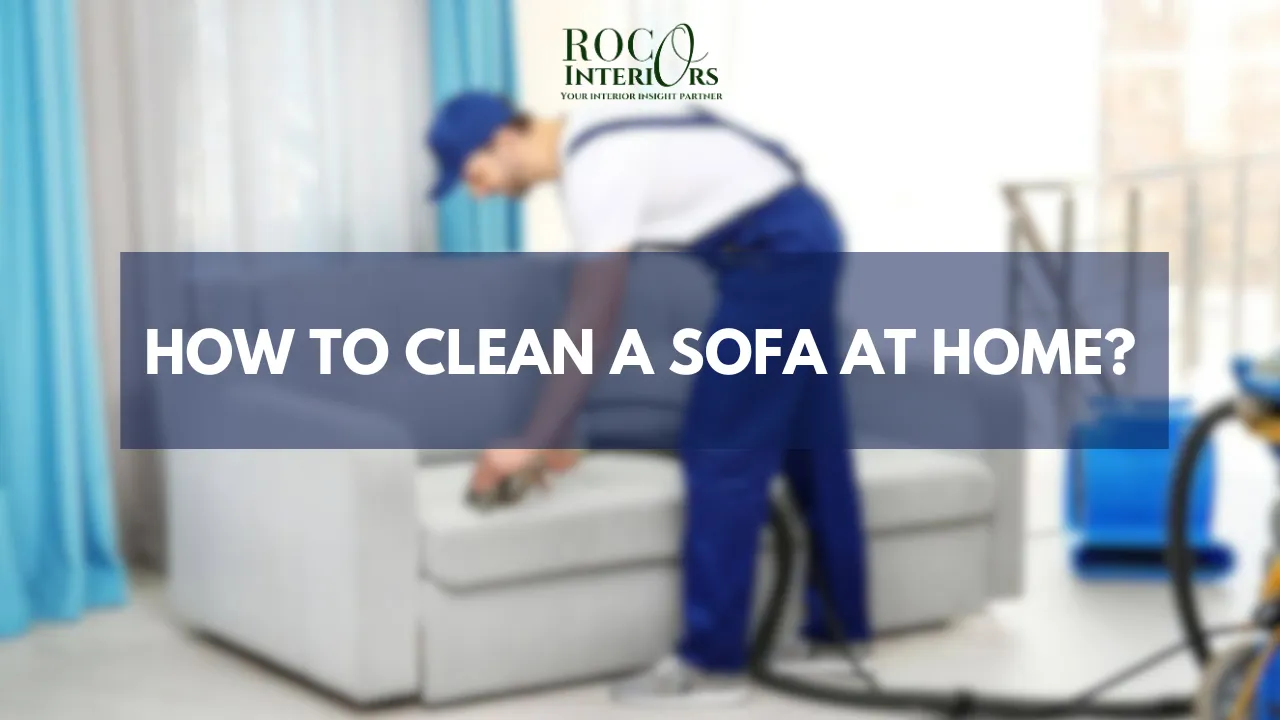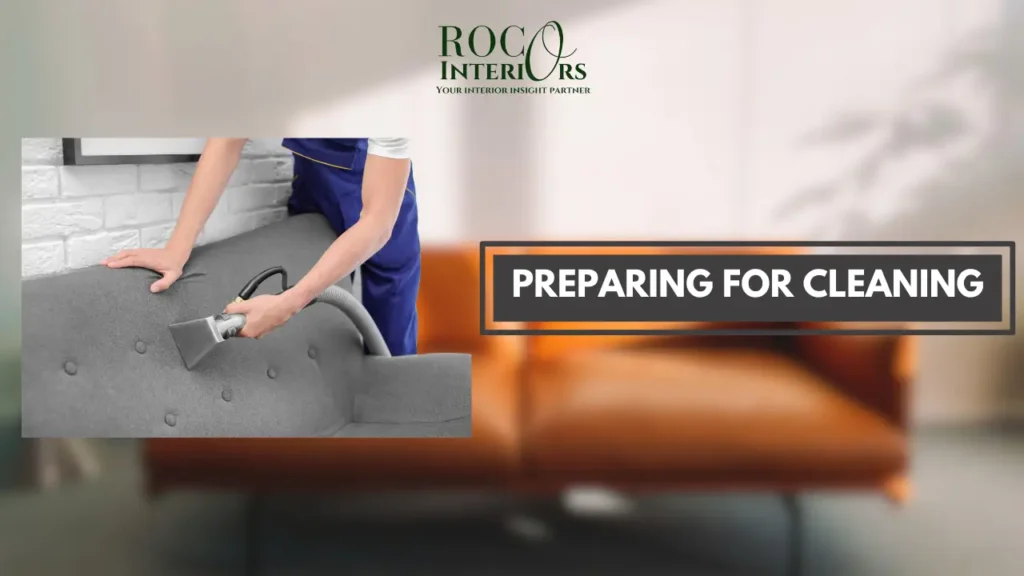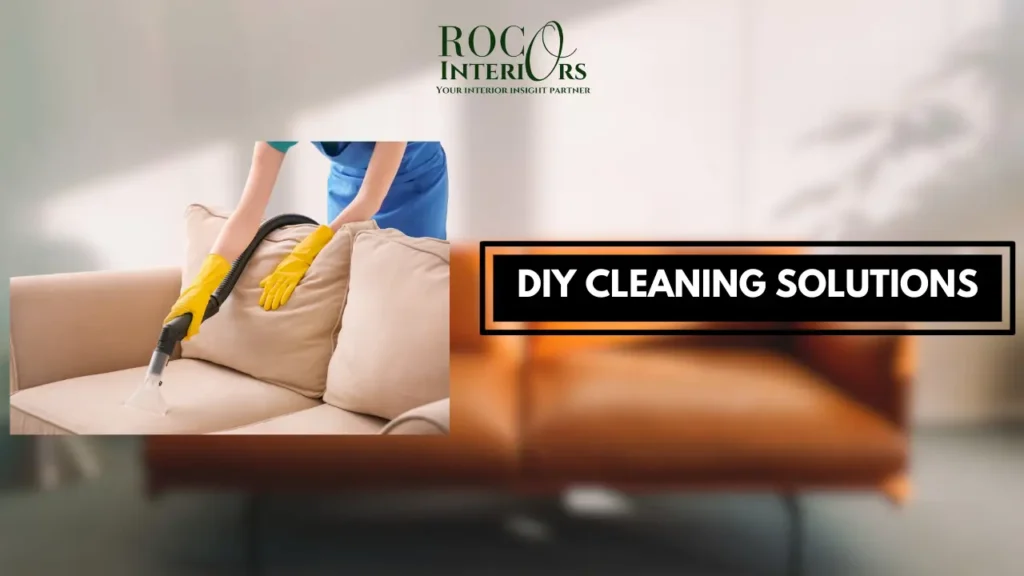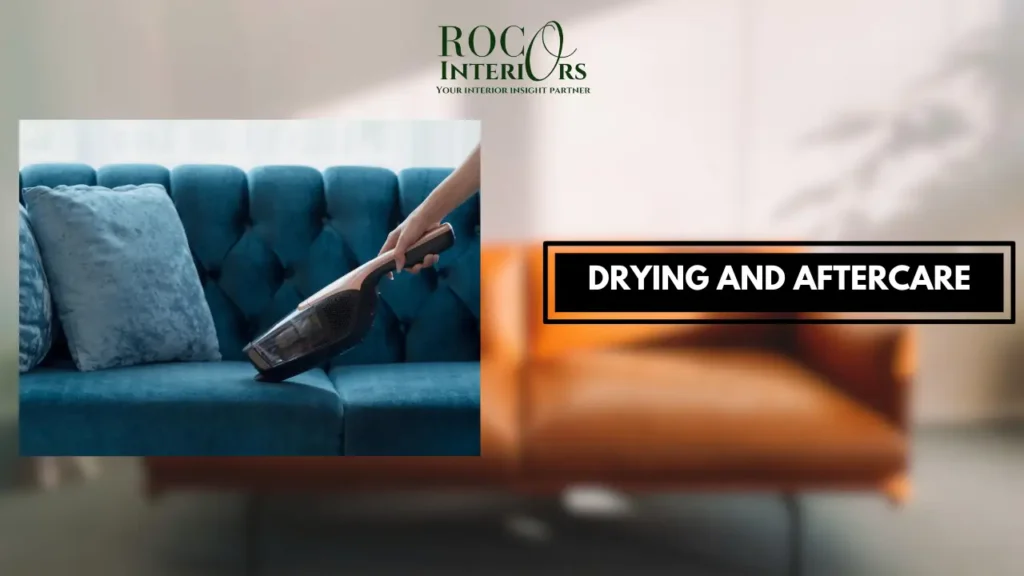How To Clean A Sofa At Home?


Haseeb Ali
Furniture Guide Expert
Table of Contents
Keeping our sofas fresh, clean and odor-free is an important part of maintaining a nice home. However, the task to clean a sofa at home can seem daunting, especially when dealing with large upholstered pieces, delicate fabrics and stubborn stains. The good news is that with some basic preparation and the right cleaning methods, you can easily clean your fabric or leather sofa yourself.
Understanding Your Sofa’s Material
The first step towards cleaning your sofa properly is understanding what it’s made of. Sofa upholstery fabrics. Most common sofa covering. Varieties include cotton, linen, microfiber, polyester blends. Generally durable and sofa-friendly.
Classic luxurious material, real leather requires special care and cleaning methods. Durability depends on quality. Elegant but delicate fabric prone to crushing, needs a gentle cleaning approach.
Soft synthetic fabric that’s easy to clean a sofa at home but more prone to stains. Made from synthetic weather-resistant fabrics like olefin for patio use. The cleaning approach also depends on the weave of the fabric and whether the material has a protective coating.
Always check furniture tags for the manufacturer’s recommended cleaning methods.
Grain leather is more delicate than top grain, and high-quality leather is often coated. For velvet, a tight dense weave is best. Identifying these specifics will help you tailor your cleaning correctly.
Preparing for Cleaning

Before cleaning, thoroughly vacuum upholstered surfaces and crevices to remove loose dirt, debris and pet hair. Use a soft brush attachment to avoid snags. Check furniture tags before using any cleaning fluid, even water. Velvet, for example, should only be vacuumed due to its delicate nature. Leather may specifically warn against certain chemical cleaners.
Spot clean stains first. Absorb wet spills immediately by blotting gently towards the center of the stain with a clean white cloth. Don’t rub, which can spread the stain and damage fabrics.
For dirt buildup or when a deeper clean is needed, move all cushions and removable covers to access hidden debris and grime in crevices. Wash removable covers according to manufacturer’s instructions.
DIY Cleaning Solutions

For most routine sofa cleaning tasks at home, simple homemade solutions using gentle ingredients like dish soap, vinegar, water and baking soda are often effective for lifting away dirt and stains without harsh chemicals. Always spot test any cleaner first in an inconspicuous area to check for any potential damage or discoloration.
An all-purpose upholstery cleaner can be easily made by mixing together 2 cups of warm water, 1⁄2 teaspoon of clear hand dishwashing liquid and 1 tablespoon of white vinegar in a spray bottle. Shake gently and then spray the solution directly onto upholstery areas needing cleaning.
Use a soft bristle brush to gently scrub the area, then wipe away the cleaner with a clean microfiber towel. Let the sofa fully air dry before using or replacing any cushions.
For tougher stains on more durable, sturdy sofa fabrics, make a cleaning paste using 3 parts baking soda mixed with 1 part water to clean a sofa at home. Use a soft bristle scrub brush to gently work the paste into the stained area, letting it sit briefly to lift and absorb the stain. Then wipe away the paste with a damp sponge or cloth. Rinse the area with clean water if needed to remove paste residue.
For deeper, routine cleaning to tackle excessive dirt buildup all over upholstery, specialized chemical cleaners sold specifically for sofa and carpet cleaning tasks are typically more effective than homemade cleaners, especially when used with professional-grade cleaning machines that provide powerful suction for grime removal and soil extraction. This technique also crusical to clean large sofas like 7-seater sofa.
Still, always check that any store-bought cleaner you choose is specifically formulated to be safe for use on the fabric composition of your particular sofa.
Step-By-Step Process To Clean a Sofa at Home
For fabric single sofas, first vacuum the entire surface using a soft brush attachment to lift surface debris. Pre-treat any stubborn set-in stains to loosen them before widespread cleaning. Mix an all-purpose upholstery cleaner solution in a spray bottle like the one described above.
Then, working in small sections across the sofa, spray the cleaner directly onto the fabric surface or onto a soft brush and gently scrub using light circular motions.
Take care not to oversaturate the fabric. Use a clean microfiber towel to blot away excess moisture before moving to the next section. Allow the entire sofa to air dry fully before replacing cushions or covers and using again.
To properly clean leather sofas, first vacuum the entire surface using a soft brush tool. Next, dip a soft lint-free cloth into leather cleaning solution and gently wipe surfaces to lift away dirt, debris and conditioners – avoid over-wetting the leather. Then take a fresh damp cloth and wipe the areas that were cleaned to remove any chemical residue left from leather cleaners.
Finish by buffing the leather surfaces gently with a clean dry soft cloth. Let the leather air dry completely before applying a fresh layer of leather conditioning treatment.
For delicate velvet upholstery, regularly vacuum using a soft brush nozzle held slightly hovered above the delicate fabric surface, without touching and crushing the plush fibers. To treat stains and soiled areas, very lightly mist a vinegar-based cleaning solution onto a cloth first – not directly onto the velvet.
Then gently dab and blot at stains to lift them without forceful scrubbing or using too much moisture, which can damage velvet, effectively implementing the method to clean a sofa at home.
After cleaning a section, allow it to fully and completely air dry before doing the next section, away from direct sunlight to prevent fading. Once fully dried, use a specialty velvet fabric comb gently across the piled surface to revive the crushed nap and restore the plush texture.
Drying and Aftercare

Once your sofa is completely dry after cleaning, be sure to gently brush the fabric pile back into place to restore the texture and revive any crush marks. This is especially important for velvet and other plush upholstery fabrics prone to matting.
To proactively keep your sofa cleaner on a regular basis, vacuum all upholstered surfaces weekly using the proper handheld nozzle attachments for your fabric type. Additionally, learning how to clean a sofa at home effectively can help maintain its appearance and longevity.
Immediately blot any spills, spots or stains to prevent setting into the fabric. Regularly fluff, rotate and rearrange sofa cushions to promote even wear and distribute soil buildup rather than just letting it accumulate in overused areas and crevices.
Cover sofa cushions with removable, machine washable slipcovers suited to the fabric which can easily be laundered when dirty. Similarly, use sofa throws and lightweight blanket covers over seat cushions whenever occupied – these can be frequently washed to cut down on daily grime transfer.
And be sure to keep pets off upholstered furniture to prevent their hair, oils, and dander from becoming deeply embedded into fabric over time, leading to odors, damage, and the need to clean a sofa at home. Gently discourage cats and dogs from clawing, chewing or digging at cushions as well.
Conclusion
While keeping our upholstered furniture fresh and stain-free might seem time-consuming, you now have all the techniques to efficiently clean a sofa at home. Understanding your sofa’s composition helps tailor cleaning methods.
From vacuuming and gently blotting spills to upholstery cleaning solutions and professional strength cleaning, keep this guide on hand.
FAQs
How often should I clean my sofa?
Light vacuuming once a week helps control dust and pet hair between deeper cleanings. The overall cleaning frequency depends on your sofa material along with household dirt and traffic levels. Every 3-12 months is typical for deeper cleaning fabric sofas.
Can I use vinegar/baking soda for sofa cleaning?
White vinegar safely removes most dirt, grime and many stains from durable upholstery fabrics like cotton, linen, polyester blends. Avoid using vinegar solutions on silk or wool fabrics however. Baking soda also works well for absorbing and lifting stains from heavy duty fabrics when made into a paste.
How do I deal with tough stains like ink?
Tackle fresh stains ASAP by blotting gently towards the stain center with cloth pads or paper towels. Avoid excessive scrubbing. For ink spots, spray hairspray onto the stain before blotting. Oily butter, grease or makeup stains can be lifted by talcum powder or cornstarch before vacuuming up residue.
Is steam cleaning safe for my sofa?
While very effective for sanitizing, steam can damage many fabrics by over-wetting, leaving water marks or causing dye bleeding. So test first in an inconspicuous spot after checking manufacturer guidelines. In general, steam cleaning works well for durable fabrics but avoids using more delicate upholstery materials like velvet, silk, leather, wool or newer styles which could still shrink or warp despite being labeled steam cleanable.
Are there any risks to DIY sofa cleaning?
With a little knowledge of your sofa’s composition combined with gentle cleaning methods, most DIYers can safely clean upholstered furniture at home without risk of damage. To prevent damage, educate yourself on your sofa fabric composition, follow material care labels closely.





